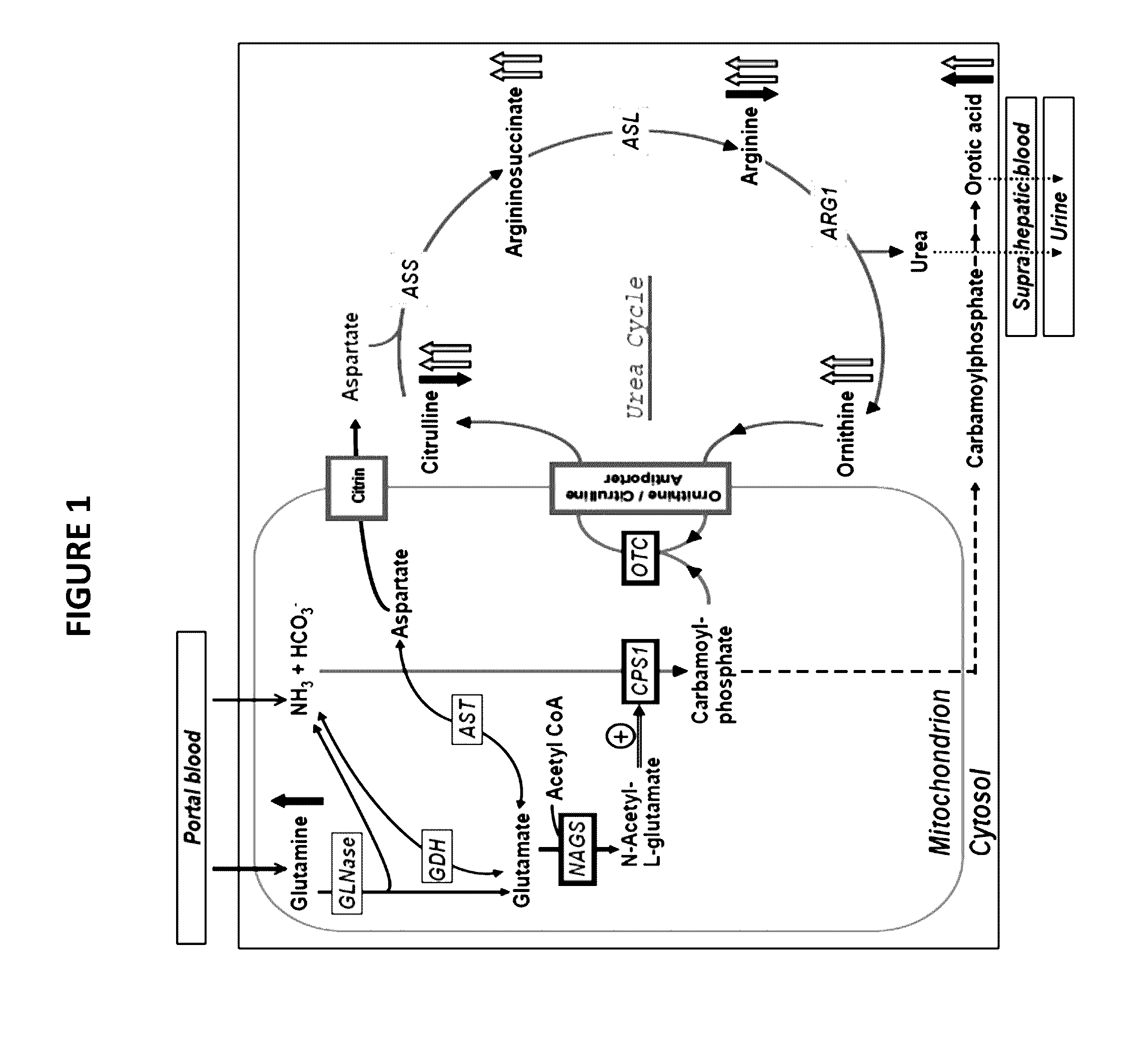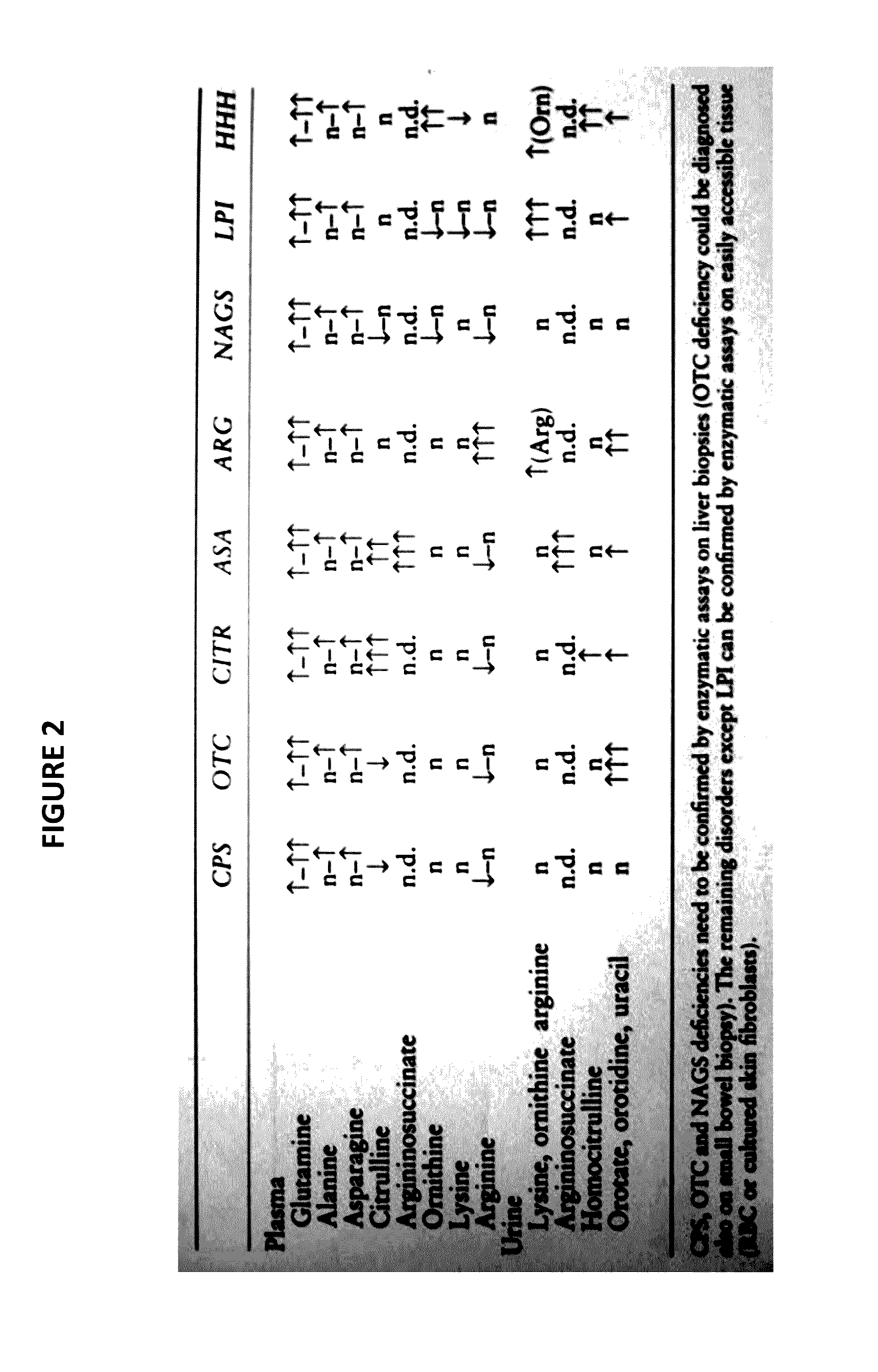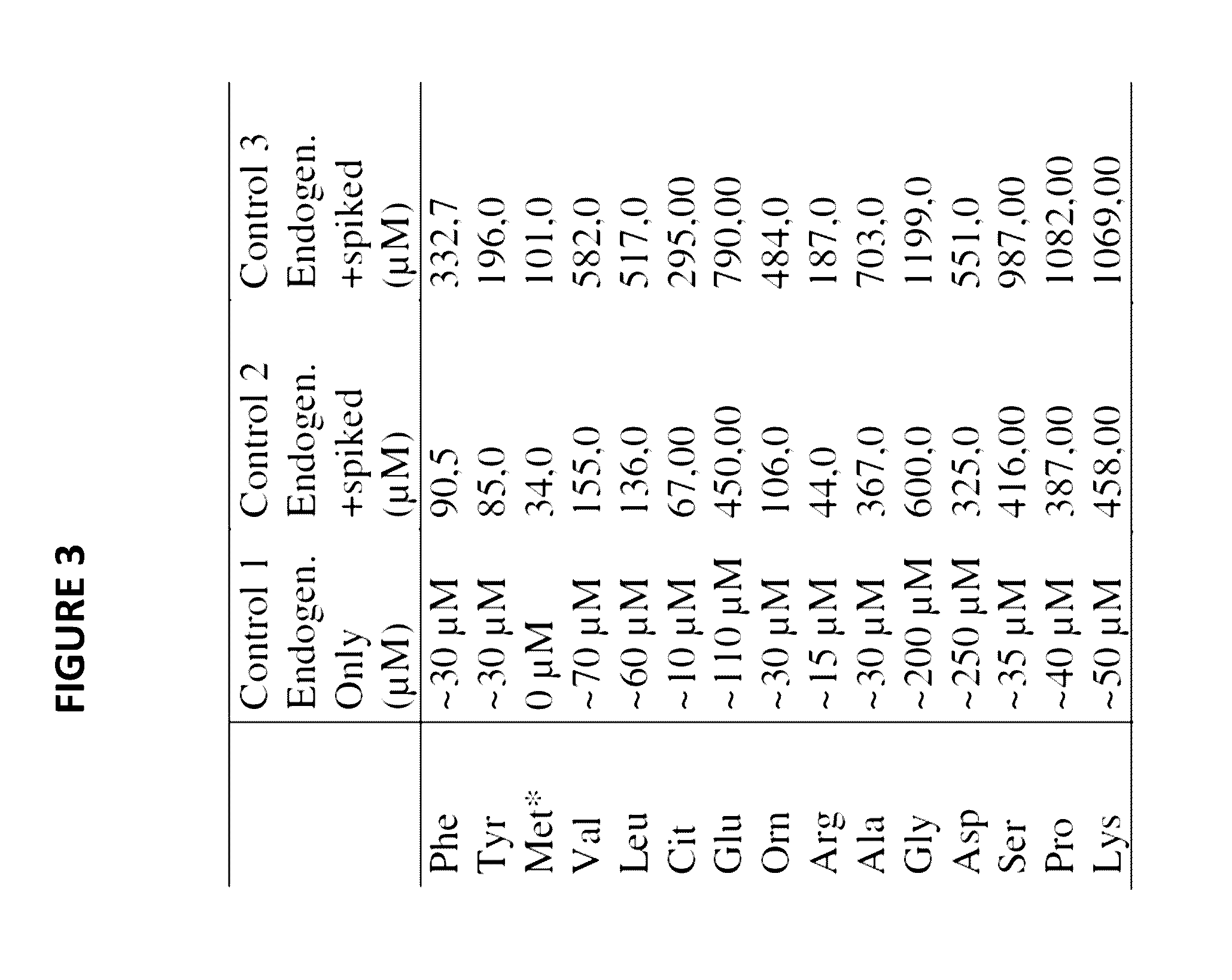Novel methods and kits for detecting of urea cycle disorders using mass spectrometry
a technology of mass spectrometry and kits, which is applied in the direction of component separation, material testing goods, assay labels, etc., can solve the problems of inability to definitively solve, mental and physical retardation, and interruptions in the metabolic pathway of urea synthesis
- Summary
- Abstract
- Description
- Claims
- Application Information
AI Technical Summary
Benefits of technology
Problems solved by technology
Method used
Image
Examples
example 1
Determination of the Levels of Glutamine, Lysine, Arginino Succinic Acid, and Orotic Acid
[0274]To determine the linearity of the measurement of glutamine, lysine, arginino succinic acid, and orotic acid, standard solutions of the respective analyte up to 20 mM were prepared and 10 μL injected into the tandem mass spectrometer and the respective ions / transitions were measured. (FIG. 6-8)
example 2
Determination of the Levels of Glutamine and Lysine in Dried Blood Samples
[0275]To determine the linearity of the measurement of the sum of lysine and glutamine in dried blood spots (DBS), blood of a healthy donor was spiked with lysine. Endogenous concentrations of lysine and glutamine were determined from an aliquot by standard amino acid determination using ion exchange chromatography. (FIG. 9)
example 3
Determination of the Sum of Glutamine and Lysine in Dried Blood Samples
[0276]FIG. 10 shows the proposed results of the measurement of the sum of glycine and lysine. For lysine and glutamine the reference range of lysine and glycine is plotted, together with the calculated sum of those 2 reference ranges (sum of lower-sum of upper reference range), measured values from 180 DBS of healthy newborns, measured values from 2 samples of a patient with proven OTC deficiency, expected range of patients with urea cycle defects (UCD).
PUM
| Property | Measurement | Unit |
|---|---|---|
| pore size | aaaaa | aaaaa |
| diameter | aaaaa | aaaaa |
| length | aaaaa | aaaaa |
Abstract
Description
Claims
Application Information
 Login to View More
Login to View More - R&D
- Intellectual Property
- Life Sciences
- Materials
- Tech Scout
- Unparalleled Data Quality
- Higher Quality Content
- 60% Fewer Hallucinations
Browse by: Latest US Patents, China's latest patents, Technical Efficacy Thesaurus, Application Domain, Technology Topic, Popular Technical Reports.
© 2025 PatSnap. All rights reserved.Legal|Privacy policy|Modern Slavery Act Transparency Statement|Sitemap|About US| Contact US: help@patsnap.com



